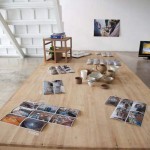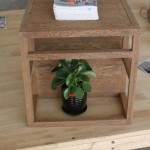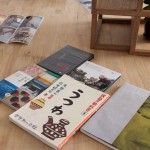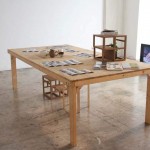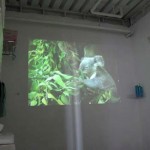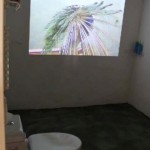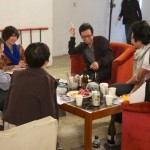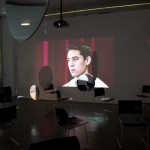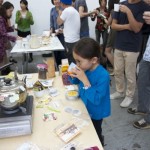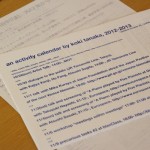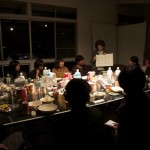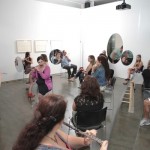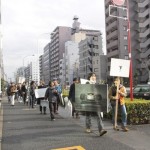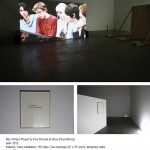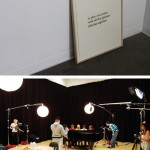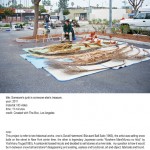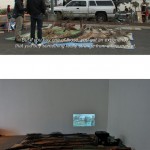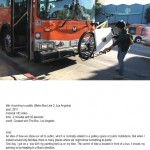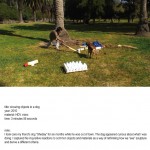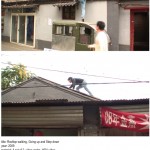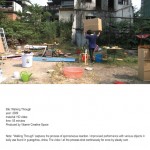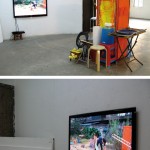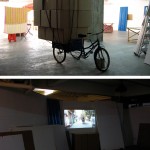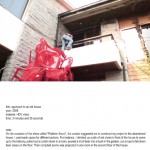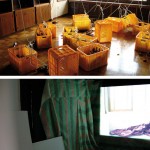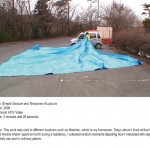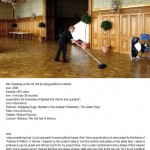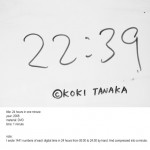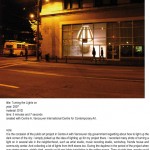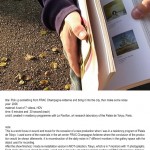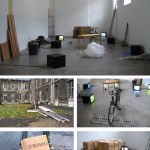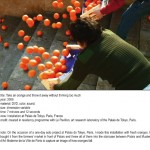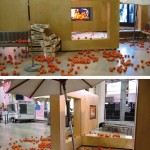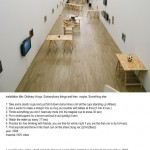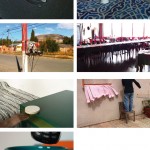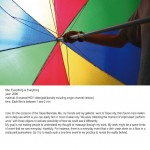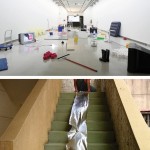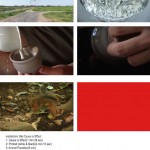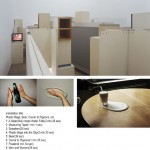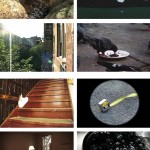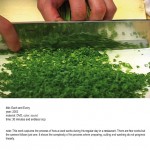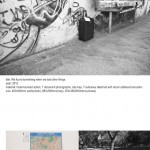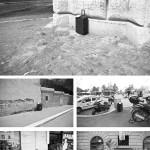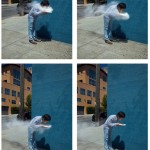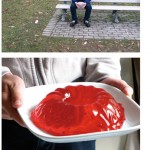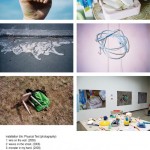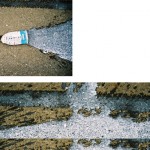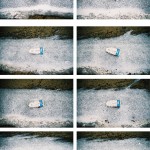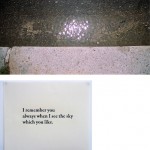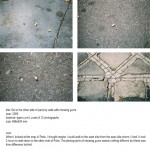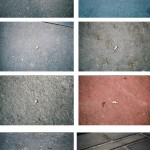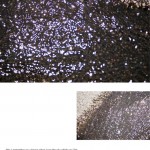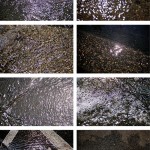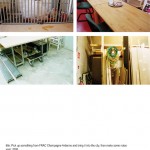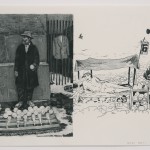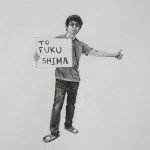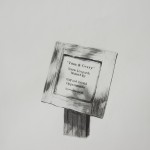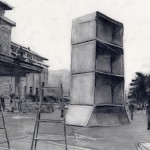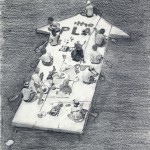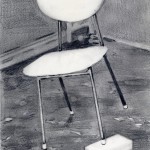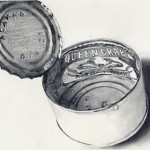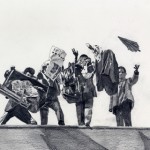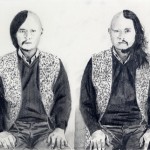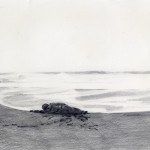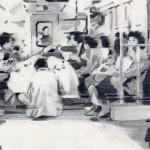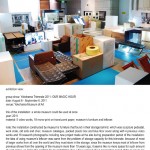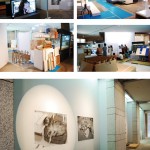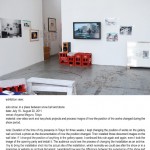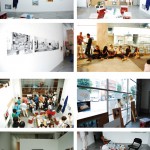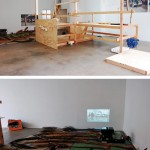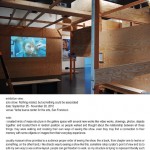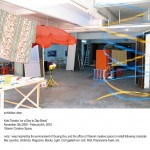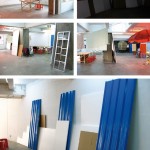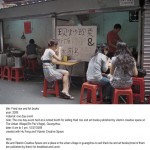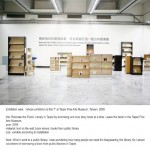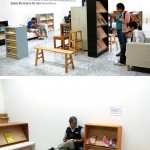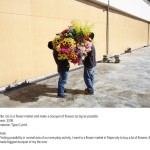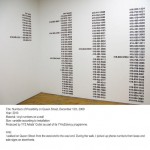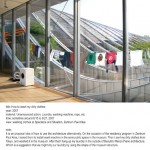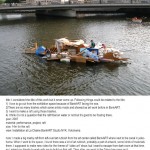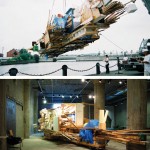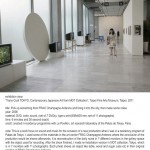Yanagi Sōetsu comes here, without invitation, 2012
Hu Fang
1
The sun was about to set when we arrived at Baimu Village. The sky was filled with an amazing pink hue against a long stretch of chestnut trees, their leafless, desolate branches exposed in the cold air, depicting a tough and simplistic beauty. A young man, Feng, was waiting for us under an old tree by the entrance to the village. He wore a blue Chinese jacket and hid his two hands in the sleeves. He greeted us softly and then led us towards his house. The pathway was so quiet that we could hear the rustling of our footsteps.
Large and small dogs became excited as we stepped into the courtyard. We couldn’t stop looking at all the ceramic objects handmade by Feng and Qing—and were invited to sit around a small table in their sitting room, which also serves as their studio in the winter. Feng quietly poured the Pu-erh tea into little cups, which he had made for tea and also for liquor.
Every potter has their own way of making tea. Tea and pottery, like tea and conversation, are intimately related. While enjoying the tea, we started to talk about things, such as why we came here. At times, things seemed to need explanation. More often than not though, words became redundant. During the whole journey, soaked in the fragrance of tea, we often found that talking was needless—it was the silence between the words that sustained our communication.
Although we hadn’t known each other before, it felt like a long-awaited meeting. (When we said goodbye, we mentioned something that triggered Qing’s memory; she said it felt like she had already seen this moment in a dream.)
2
Because of Koki Tanaka’s “a flash of thought” (一念), we began our journey to visit potters in early winter. This was not a fieldtrip, nor was it a professional research of pottery art. This was more of a search for “Ichi-go ichi-e” (一期一会, literally “one time, one meeting”), with pottery as the medium along with coincidences and the help of friends. This was a search for Tanaka’s “a flash of thought”, tested in reality.
There were many elements that contributed to Tanaka’s “a flash of thought”: Yanagi Sōetsu, Hamada Shōji, Tanaka’s hometown Mashiko and its folk art museum, daily ceramic objects and their broken pieces seen in the earthquake, the relationships between mundane experiences, the hand and the heart, the self and selflessness, contemporary art practices and survival techniques, and so forth.
We have discussed the paradox of the Mingei movement several times. The Mingei movement, led by Yanagi Sōetsu and Hamada Shōji, aimed at reintroducing to modern society the heart-touching beauty of Mingei, or the art of the people, which is something universal and beyond individualism. However, what the Mingei movement reinforced was actually this individual awareness. Ever since the Mingei movement, pottery-making has turned from a collective and unsigned activity into a kind of art creation that emphasized individuality and authorship. The “anonymous beauty” and mysterious “Other Power”, the qualities greater than individuality that Yanagi Sōetsu had so celebrated, became forgotten.
The reason why Yanagi Sōetsu advocated the therapeutic functions of Mingei to modern society must be related to the sense of turbulence and loss that has been brought about by Asia’s modernization. What kind of possibility can the making of pottery, one of humanity’s oldest survival techniques, give us today? How can it help us to reconnect to the world? If art practices and survival techniques are supposed to be inseparable, how can we rediscover such a union? Through what methods and trials?
3
What really fascinates us is the uncertainty and chaos that is created as things transform: as a lump of clay slowly takes shape in a man’s hands, his heart and hands become directly connected. Its shape represents the heart, and the infinite subtleties created during coloring and firing are just like the ever-changing qualities of the mind. Natural materials transform beyond human manipulation, they are always challenging and surprising us. Is this kind of mutual proofing the only way to seek the truth?
During our journey, we met different people whose work is all in some way related to pottery. They were from different backgrounds, in different situations, and they suggested different questions and urged Tanaka to think about different possibilities. One of them was this: can ceramic art once again become an “nameless” collective activity?
That day in Baimu village, Feng, so effortlessly, answered this question as he was pouring our tea: “Of course it’s possible; all we need to do is forget ourselves.” We did not say anything as he said this, but immediately felt the gate of possibility swing open for us.
4
In Koki Tanaka’s attempts for collective activity, we usually witness certain “moments” that are realized—a group of people gather because of an artist’s proposition. They gather to attempt to do something based on more than their daily activities: (nine hairdressers) cutting hair (for one person), (five pianists) playing a piano (together), (five poets) writing a poem (together), and (six potters) making (one piece of) pottery.
If the artist had not had “a flash of thought”, these groupings and attempts would not have been happening; however, the results of these attempts are not controlled or decided by the artist. On the contrary, the artist can only stand aside, quietly witnessing it all taking place. The artist does not create; he just fosters a moment to come about. Moreover, everyone in that situation including all the members of the film crew, focus only on what they are doing, as if they have forgotten themselves; everyone focuses only on what is happening, thus moving away from their own existence and entering a broader scene—you can feel a vast and elegant sense of quietness floating above the scene. People may speak and act, but they no longer persist in presenting themselves. Instead, they are continually giving energy and confirmation to each other.
Does such a “moment” bring us the “redemption” that Yanagi Sōetsu longed for? And the redemption of this “moment” is exactly that: we should constantly create this “moment”. With the energy it gathers, even the uproarious world can quieten down and stay with us for an instant—but this instant may last as long as your life. This instant can create a space. This instant can be the world per se, a space that we can constantly return to, no matter how many years have passed.
Yanagi Sōetsu comes here, although there is no invitation. Lu Yu¹ also comes. Everything comes, and stays with great silence.
There must be a certain reason
causing us to meet each other.
Fate has decided it.
Air moves faster
as we miss each other,
leading us to a place that we have never reached.
(Translated by Anthony Yung from Chinese)
___________________________________________________
¹Lu Yu (陆羽) (733–804), is respected as the Sage of Tea for his book The Classic of Tea, the first definitive work on cultivating, making and drinking tea.
(All images: Courtesy the artist and Vitamin Creative Space, Text: Vitamin Archive)
>>Koki Tanaka: a pottery produced by five potters at once (silent attempt),2013
